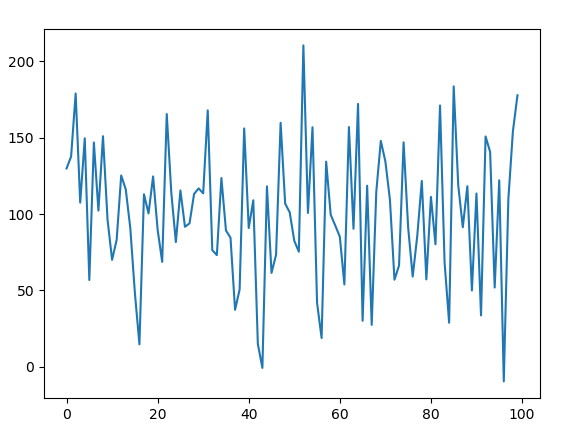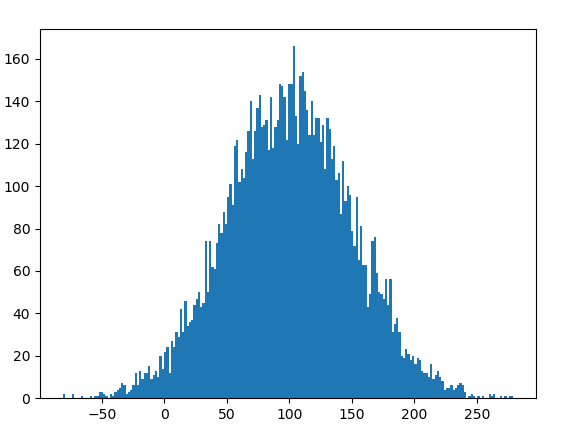random.gauss() function in Python
Last Updated :
26 May, 2020
random module is used to generate random numbers in Python. Not actually random, rather this is used to generate pseudo-random numbers. That implies that these randomly generated numbers can be determined.
random.gauss()
gauss() is an inbuilt method of the random module. It is used to return a random floating point number with gaussian distribution.
Syntax : random.gauss(mu, sigma)
Parameters :
mu : mean
sigma : standard deviation
Returns : a random gaussian distribution floating number
Example 1:
import random
mu = 100
sigma = 50
print(random.gauss(mu, sigma))
|
Output :
127.80261974806497
Example 2: We can generate the number multiple times and plot a graph to observe the gaussian distribution.
import random
import matplotlib.pyplot as plt
nums = []
mu = 100
sigma = 50
for i in range(100):
temp = random.gauss(mu, sigma)
nums.append(temp)
plt.plot(nums)
plt.show()
|
Output :

Example 3: We can create a histogram to observe the density of the gaussian distribution.
import random
import matplotlib.pyplot as plt
nums = []
mu = 100
sigma = 50
for i in range(10000):
temp = random.gauss(mu, sigma)
nums.append(temp)
plt.hist(nums, bins = 200)
plt.show()
|
Output :

Share your thoughts in the comments
Please Login to comment...